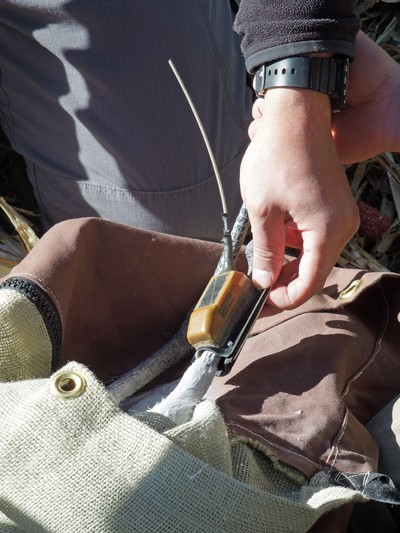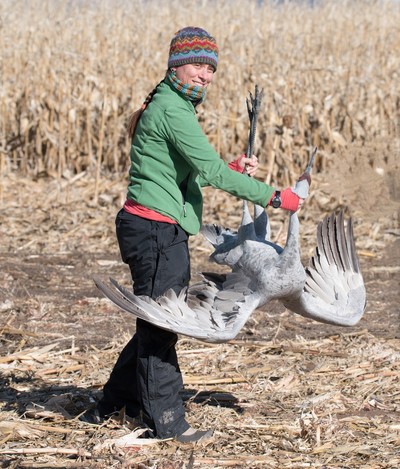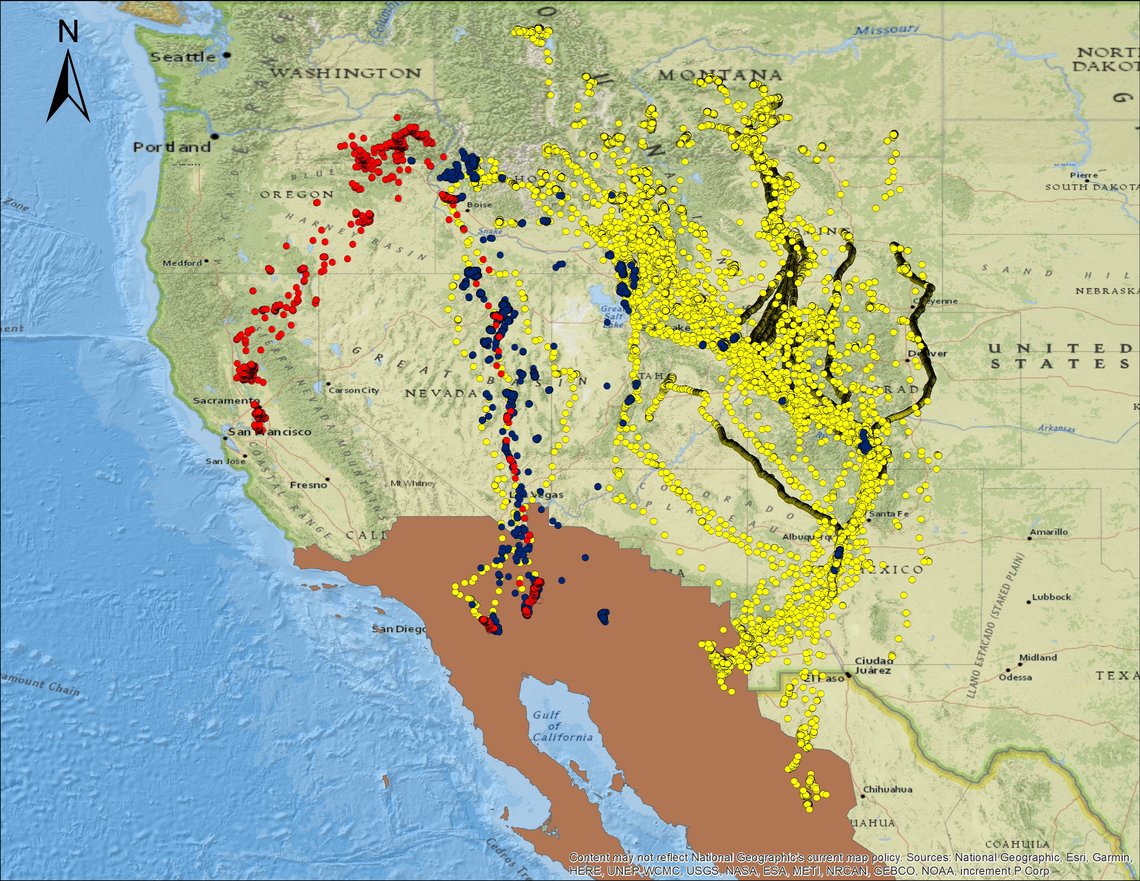By Dan Collins, U.S. Fish and Wildlife Service, Division of Migratory Birds, Albuquerque, New Mexico
From their tall stature to their graceful mating dances, Sandhill Cranes are a spectacle of nature. Western Greater Sandhill Cranes (Antigone canadensis tabida) bring to mind the breeding grounds in Idaho, Montana, and Wyoming, or perhaps migration or wintering areas like the San Luis Valley of Colorado or the Middle Rio Grande Valley of New Mexico. What you may not realize is that after these areas in the Intermountain West Joint Venture, the Sonoran Joint Venture states of Arizona, California, Sonora, and Chihuahua are the second-most important geography for Western Greater Sandhill Cranes. In the west Sandhill Cranes are managed as three distinct populations (see table below), all stable to increasing. Over the past five years, researchers have fitted 122 Sandhill Cranes in New Mexico, Arizona, California, Oregon, Idaho, Montana, and Colorado with GPS transmitters as part of an effort to track daily and annual movements. This has provided interesting insights into where these different populations spend their time and how we can conserve them.

All 122 of the tagged birds bred within the boundaries of the Intermountain West Joint Venture (in Oregon, Idaho, Wyoming, Utah, Colorado, and Montana). Past studies estimated that upwards of 80% of the Rocky Mountain Population overwintered in the Middle Rio Grande Valley of New Mexico. Our data, however, suggest that 65-75% may be a more accurate estimate for central New Mexico, while the rest of the population spends the winter months in the Sonoran Joint Venture, in southeastern Arizona and the highlands of northern Sonora and Chihuahua. Our research also shows that the Lower Colorado River Population overwinters in the SJV exclusively, from the Gila Bend, Arizona area through the Imperial Valley of southeastern California. The Central Valley Population primarily overwinters in California’s Central Valley (in the geography of the SJV’s neighbors to the north, the Central Valley Joint Venture), with a small portion overwintering with the Lower Colorado River Population.
This confirms that the Sonoran Joint Venture is a wintering stronghold for Western Greater Sandhill Cranes, with areas of importance in Arizona such as the Willcox Playa – Whitewater Draw area, Gila Bend, Cibola National Wildlife Refuge, and the northern Mexican highlands, as well as the Imperial Valley in California. We estimate that one third to one half of the approximately 35,000 Greater Sandhill Cranes spend their winter in the SJV region—the original snowbirds.

Adding to the importance of the SJV, a group of Lesser Sandhill Cranes from the Midcontinent Population also overwinters in the area. These birds mix with Greater Sandhill Cranes from the Intermountain West on the wintering grounds in the Willcox-Playa – Whitewater Draw area of southeastern Arizona, which means that the SJV is perhaps even more important for Sandhill Crane populations than originally thought. We also learned that these populations intermingle on the breeding and wintering grounds more than previously thought (see map), suggesting that things like habitat fragmentation may be the reason we see quasi-distinct wintering populations, rather than genetic or behavioral differences.
In the arid landscape of the Sonoran Joint Venture, birds like Sandhill Cranes that depend on wetlands face special challenges. Conserving, restoring, and protecting existing wetlands is important, of course. However, nearly as important is working with ranchers, farmers, and other private landowners to manage land in a way that support cranes, other birds, and wildlife, which can make use of agricultural fields and stock tanks as secondary habitat, particularly in drought years. Most importantly, this research makes concrete connections between Western Greater Sandhill Crane breeding grounds in the intermountain west and the wintering grounds in California, Arizona and northern Mexico, underscoring the important role of collaboration for long-term conservation among all Sonoran Joint Venture partners and collaborators.
Further Reading:
Climate and human water use diminish wetland networks supporting continental waterbird migration
Landowner Relations & Habitat Enhancement Program


